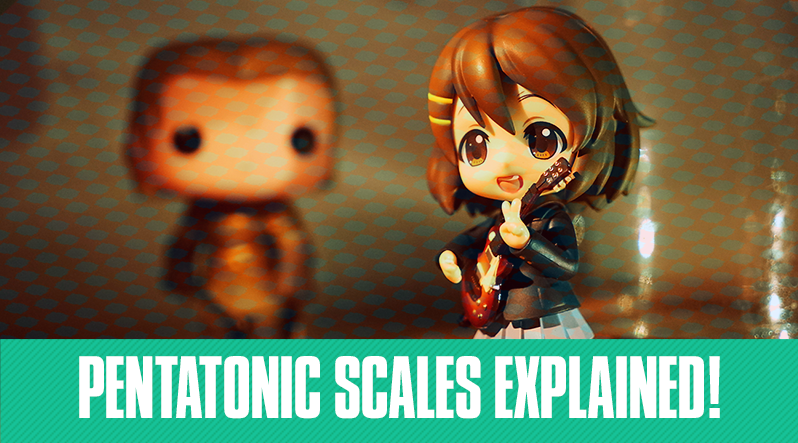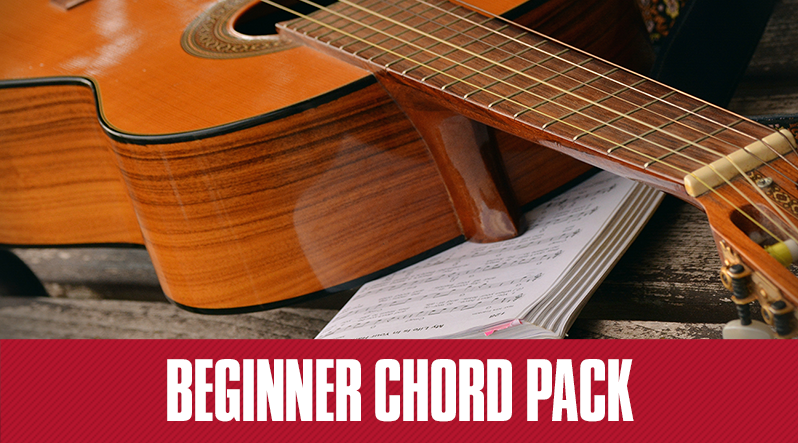Updated on 5/14/24
Barre chords (not 'bar' chords) are difficult because when you first learn them in your beginner guitar lessons, you might not have the finger strength to make a barre on all strings across the fretboard.
Holding down all the strings is tough because there’s a lot of tension, and playing these chords closer to the headstock is even more complicated because the strings are tighter and the frets are more spread out.
In this online guitar lesson we will show you everything you need to know about playing barre chords with tips, tricks, diagrams and videos.
What’s a Barre Chord?
A barre chord is a chord which involves the index finger barred across five or six string at the same fret essentially creating a new nut.
This type of guitar chord which use six strings are based on the E major and E minor chords.
The barre chords which only use five are based on A minor and A major.
These shapes are moved up and down the neck to play other major and minor chords.
You can always brush up on your guitar vocabulary by using the glossary here.
For the sake of this blog post, we’ll focus on the E major and E minor barre chord shapes with the root note on the 6th string, or the low E string.
Remember, it's a great idea to use a guitar chord chart while learning new chords!
The E Major Barre Chord Shape
First, let’s take a look at the E major shape. It looks like this:As you can see in the image above, this chord is played right at the first fret.
All of the strings are played in this chord.
If you think about it, it’s like a barre chord because the guitar’s nut acts as a finger.
If you move the entire E major shape up one fret and then use your first finger to hold down all the strings on the first fret, you’ll make an F major barre chord.
It should look like this:It’s an F chord because the root note is on the F, which is on the first fret of the six string, or low E string.
This is often regarded as the most difficult chord to play on guitar.
If you move that entire shape to another position, that will change the root note of the entire chord, essentially changing the chord entirely.
Any barre chords that use this shape will always be major.
For example, if you play that same chord shape on the third fret, it’s a G major. It looks like this:If you move it to the fifth position, it will become an A major and so on and so forth.
That’s how you play major barre chords using the E major shape.
The E Minor Barre Chord Shape
Let’s take a look at how to turn these barre chords we just learned, into minor barre chords.
It’s super easy. First let’s examine the A major barre chord again, but this time, let's compare it to what an A minor chord looks like. As you can see from the above comparison, the biggest difference between the major and minor barre chords is that the note played on the G string is different.
In a minor barre chord you lift your second finger, allowing your index finger (first finger) to hold down all three treble strings, the G, the B, and the high E string.
And in major barre chords your second finger is being used to hold down the G string, in this case, the 6th fret of the G string.
The minor chord shape is based on the E minor chord, because if you play a standard E minor open chord, the nut, again, acts as a hypothetical bar.
For example, if you move the A minor chord shape all the way back to towards the head stock, you'll create an E minor, which looks like this:Just like the major barre chord shapes, the minor barre chords are also moveable.
For example, if you play the minor barre chord shape on the 3rd fret, it's a G minor chord, and if you play it on the 1st fret, it's an F minor chord.
For more on barre chords check out Rock Level 1 and learn how to use these chords in rock.
For anyone wanting to try online guitar lessons, check out our Guitar Fundamentals Courses.
FAQ
What are the 4 basic barre chords?
The four basic barre chords are the F major chord, F#m chord, Bb major and B minor. They cover major and minor shapes that can be moved up and down the neck to play different chords.
What is the point of barre chords?
Barre chords let you play the same chord shapes in different positions on the neck, allowing you to play any chord without needing open strings. They're versatile and essential for playing in various keys.
What is the easiest barre chord?
The G major chord is often considered the easiest barre chord for beginners because it’s a few frets from the nut and uses a common E major shape.
Are barre chords the hardest?
Barre chords can be challenging for beginners, but they become easier with practice. They require strength and proper technique, but they're not impossible.
Why are barre chords so hard on acoustic?
Barre chords can be tough on an acoustic guitar due to higher action (the distance between the strings and the fretboard) and thicker strings, which require more finger strength.
How do you play barre chords comfortably?
To play barre chords comfortably, keep your thumb behind the neck and press down evenly across all strings with your index finger. Use the side of your index finger for better leverage and less strain.
How do you play barre chords without bending your wrist?
Keep your wrist straight and your thumb in the middle of the back of the neck. This helps distribute the pressure more evenly and reduces strain.
Why do barre chords hurt my wrist so much?
Wrist pain can occur if you're applying too much pressure or bending your wrist excessively. Make sure your hand is relaxed and your thumb is positioned correctly behind the neck.
How to do barre chords without hurting your thumb?
Use the natural curve of your index finger to press the strings, and place your thumb directly behind your index finger for support. Don’t squeeze too hard—focus on even pressure.
How to play barre chords without buzzing?
To avoid buzzing, ensure your index finger is pressing down all the strings firmly and close to the fret. Adjust your finger positioning and pressure until the chord rings out cleanly.

